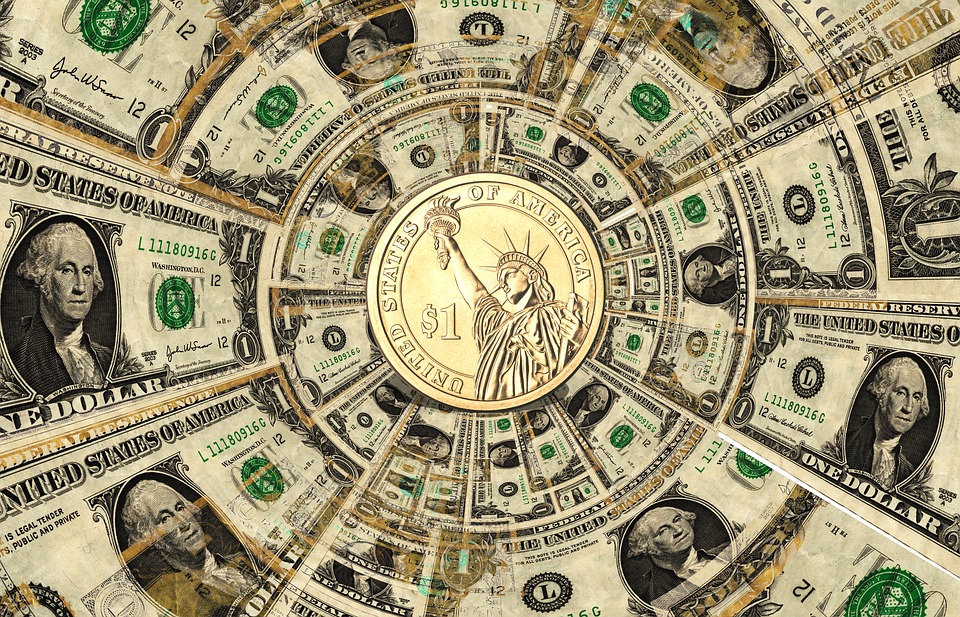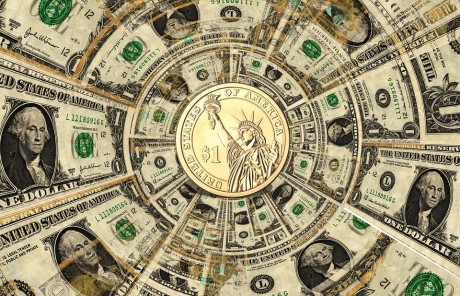 If something happens seven times in a row, do you think that there is a pretty good chance that it will happen the eighth time too? Immediately prior to the last seven recessions, we have seen an inverted yield curve, and it looks like it is about to happen again for the very first time since the last financial crisis. For those of you that are not familiar with this terminology, when we are talking about a yield curve we are typically talking about the spread between two-year and ten-year U.S. Treasury bond yields. Normally, long-term rates are higher than short-term rates, but when investors get spooked about the economy this can reverse. Just before every single recession since 1960 the yield curve has “inverted”, and now we are getting dangerously close to it happening again for the first time in a decade.
If something happens seven times in a row, do you think that there is a pretty good chance that it will happen the eighth time too? Immediately prior to the last seven recessions, we have seen an inverted yield curve, and it looks like it is about to happen again for the very first time since the last financial crisis. For those of you that are not familiar with this terminology, when we are talking about a yield curve we are typically talking about the spread between two-year and ten-year U.S. Treasury bond yields. Normally, long-term rates are higher than short-term rates, but when investors get spooked about the economy this can reverse. Just before every single recession since 1960 the yield curve has “inverted”, and now we are getting dangerously close to it happening again for the first time in a decade.
On Thursday, the spread between two-year and ten-year Treasuries dropped to just 79 basis points. According to Business Insider, this is almost the tightest that the yield curve has been since 2007…
The spread between the yields on two-year and 10-year Treasurys fell to 79 basis points, or 0.79%, after Wednesday’s disappointing consumer-price and retail-sales data. The spread is currently within a few hundredths of a percentage point of being the tightest it has been since 2007.
Perhaps more notably, it is on a path to “inverting” — meaning it would cost more to borrow for the short term than the long term — for the first time since the months leading up to the financial crisis.
So why is an inverted yield curve such a big event? Here is how CNBC recently explained it…
An inverted yield curve, which has correctly predicted the last seven recessions going back to the late 1960’s, occurs when short-term interest rates yield more than longer-term rates. Why is an inverted yield curve so crucial in determining the direction of markets and the economy? Because when bank assets (longer-duration loans) generate less income than bank liabilities (short-term deposits), the incentive to make new loans dries up along with the money supply. And when asset bubbles are starved of that monetary fuel they burst. The severity of the recession depends on the intensity of the asset bubbles in existence prior to the inversion.
What is truly alarming is that the Federal Reserve can see what is happening to the yield curve, and they can see all of the other indications that the economy is slowing down, but they decided to raise rates anyway.
Raising rates in a slowing economy is a recipe for disaster, but the Fed has gone beyond that and has declared that it intends to start unwinding the 4.5 trillion dollars of assets that have accumulated on the Fed’s balance sheet.
Janet Yellen is trying to tell us that this will be a smooth process, but many analysts are far from convinced. For instance, just consider what Peter Boockvar recently told CNBC…
“They desperately want this to be an easy, smooth, paint-drying type of process, but there’s no chance,” said Peter Boockvar, chief market analyst at The Lindsey Group. “The whole purpose of quantitative easing was to inflame the markets higher. Why shouldn’t the reverse happen when we do quantitative tightening?”
I hope that there are no political motivations behind the Fed’s moves. During the Obama era, interest rates were pushed all the way to the floor and the financial system was flooded with new money by the Fed. But now the Fed is completely reversing the process now that Donald Trump is in office.
When the inevitable stock market crash comes, Trump will get most of the blame, but it will actually be the Federal Reserve’s fault. If the Fed had not injected trillions of dollars into the system, stocks would not have ever gotten this high. And now that they are reversing the process that created the bubble, a whole lot of innocent people out there are going to get really hurt as stock prices come crashing down.
And if you thought that the last recession was bad for average American families, wait until you see what happens this time around. As Kevin Muir has noted, it is utter madness for the Fed to hit the breaks in a rapidly slowing economy…
There are a million other little signs the US economy is rolling over, but that’s not important. What is important is the realization that until financial conditions back up, the Fed will not ease off the brake.
To top it all off, the Fed is not only braking, but they are also preparing the market for a balance sheet unwind. This is like QE in reverse.
It’s a perfect storm of negativity. An overly tight Fed that is determined to withdraw monetary stimulus even in the face of a declining economy.
Even if the Fed ultimately decides not to unwind their balance sheet very rapidly, rising rates will still significantly slow down economic activity.
Rising mortgage rates are going to hit the housing market hard, rising rates on auto loans are horrible news for an auto industry that is already having a horrendous year, and rising rates on credit cards will mean higher credit card payments for millions of American families.
And this comes at a time when indicator after indicator is already screaming that the next recession is dead ahead.
Today, an unelected, unaccountable central banking cartel has far more power over our economy than anyone else, and that includes President Trump and Congress. The more manipulating they do, the bigger our economic booms and busts become, and this next bust is going to be a doozy.
There have been 18 distinct recessions or depressions since the Federal Reserve was created in 1913, and if we finally want to get off of this economic roller coaster for good we need to abolish the Federal Reserve.
As many of you may have heard, I am very strongly leaning toward running for Congress here in Idaho, and one of the key things that is going to set me apart from any other candidate is that I am very passionate about shutting down the Federal Reserve. I recently detailed why it is imperative that we do this in an article entitled “The Federal Reserve Must Go”. Central banks are designed to create government debt spirals, and the size of the U.S. national debt has gotten more than 5000 times larger since the Fed was initially established.
If we ever want to do something about our national debt, and if we ever want to get our economy back on track on a permanent basis, we have got to do something about the Federal Reserve.
Anyone that would suggest otherwise is just wasting your time.


